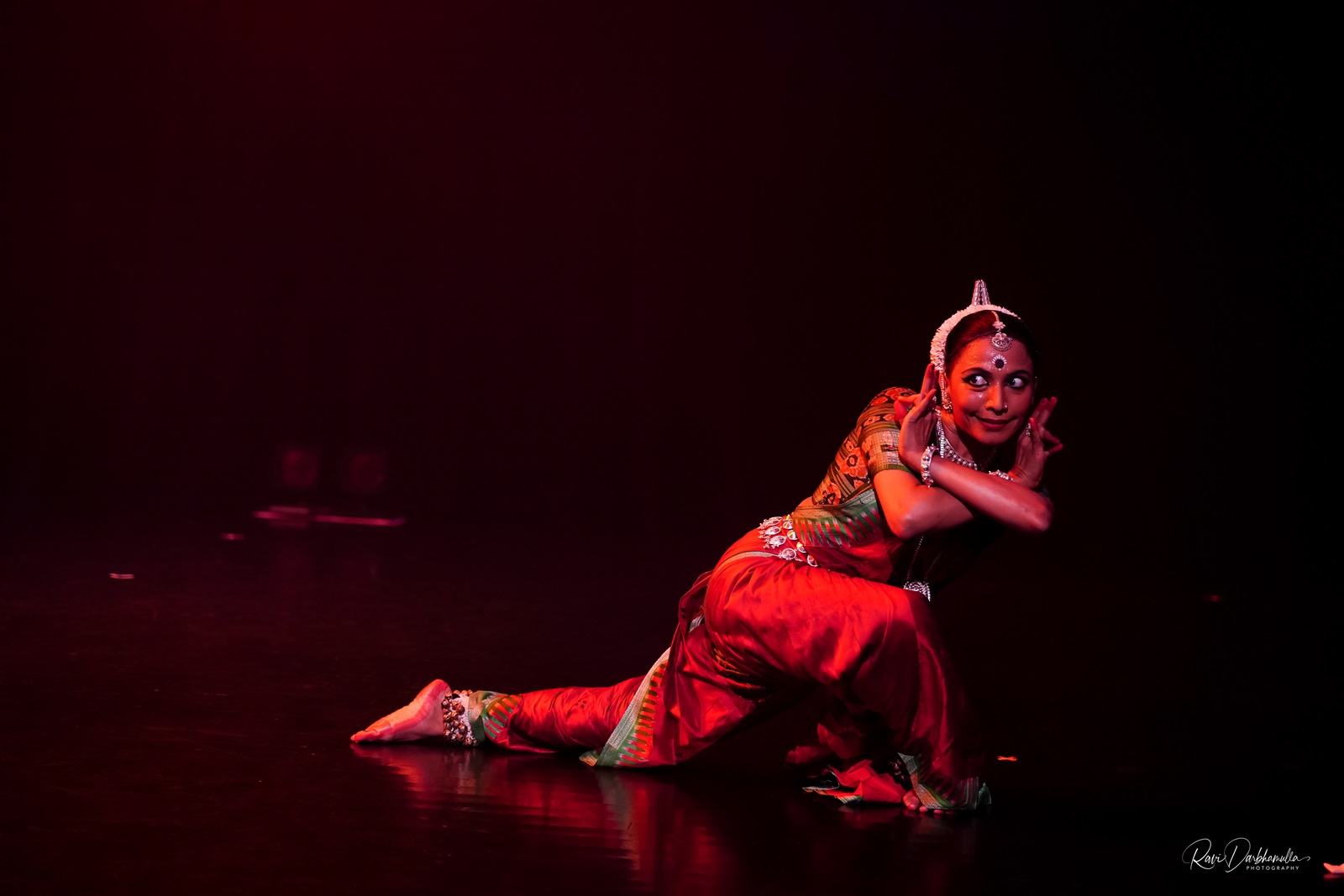I walked into the Leona Wagner Black Box for Kalpana - The World of Imagination (presented by Chitrakaavya Dance) excited to see a traditional Indian dance performance. Little did I know that I would witness magic on stage in the form of Odissi, a historic and sacred dance form from the state of Odisha, on India’s eastern coast. Furthermore, the evening’s soloist, Bijayini Satpathy, was one of the most beautiful technicians and performers to have ever graced a stage.
After Satpathy took her final bow to a standing ovation, I craved more of her and, as a result, began to research. I was not surprised to learn that Mark Morris, who has attended her performances for the last twenty years, counts her easily among the top five dancers he’s seen in his lifetime. Additionally, I learned that Satpathy, who was born in Odisha, was the longtime star of premiere Indian classical dance company Nrityagram Dance Ensemble, until last year when she decided to push into new territory as a solo artist.
But it does not take an Odissi practitioner, let alone a dancer, to be mesmerized by Satpathy. This was evidenced by the silence of the crowded theatre during short pauses in between pieces, and as I looked around me, many (myself included) sat on the edge of their seats at times, seemingly forgetting to blink or breathe.
The combination of Satpathy’s perfectionist attention to detail, physical strength, musicality, ability to be simultaneously grounded and airy, her unwavering balance, and control at all times of every inch of her body would be admired by any dancer; but it is her facial expressions, and more specifically, the power of her gaze, which make her a truly compelling performer.
In ninety minutes, we watched her transform into a deer, Mother Earth, a mourning woman, a demon, a mischievous five-year-old boy, a tormented milkmaid, a strong woman admiring her physical beauty, and both male and female lovers engaged in a passionate act, to name only a few. In a split second, Satpathy was able to embody a new character, often in a contrasting emotional state, and each time the expression in her eyes would initiate the transformation, her serpentine limbs following suit.
Satpathy’s eyes had a way of making me feel like she was staring at me and only me, yet her expressive gaze also appeared directed inward, as if she was simultaneously staring into her own soul and internal anatomy, directing her muscles to move with her eyes. In fact, it could be argued that her eyes were all the audience needed to see in order to understand the array of characters and mythical and religious stories expressed on stage.
It would be a disservice, however, not to reflect further on Satpathy’s remarkable technicality. The Odissi dance form’s theoretical base can be traced back to 500 CE in the Natya Sastra, the ancient Hindu Sanskrit text on the performing arts. The text states that two main dance forms comprise Odissi: nrita, or “pure dance,” which focuses on the perfection of detailed gestures and shapes of the hand; and nritya, the solo expressive dance which stresses the dancer’s ability to evoke and portray emotion.
While all of the pieces in Kalpana told well-known Hindu stories, pure dance, or nrita, was also shown and celebrated. In the final piece, “Sun Maiyya,” the gesture of making a tight fist was repeated. This gesture is not necessarily new to either eastern or western dance, but here, Satpathy extended her wrist, her elbow gracefully bent with an ever-so-slight external rotation, and wrapped each finger inward so tightly that the audience could practically see air escaping from her palm.
The first piece, “Mangalacharan – An Invocation to the Mother Goddess,” was full of hand movements that a layperson might describe as miming. Instead, a more accurate description of the intricate gestures might be a form of poetic sign language. In each position of the hands, every finger breathed and quivered in tune with the raga music, as if each finger was playing its own musical instrument.
The dramatic, saturated, red and green lighting by designer Sujay Saple, in tandem with meandering, mysterious, and heavy fog which filled the stage, only further transported the audience to an ethereal realm. Through watching Bijayini Satpathy move, we were all taken to her world of imagination.
Bijayini Satpathy in Kalpana - The World of Imagination. Photo by Ravi Darbhamulla.
Joanna Emily Reed is a Salt Lake City native currently residing in Pittsburgh, PA. She identifies as an occupational therapist and dancer, and wholeheartedly believes that movement is the most fundamental aspect of life.





